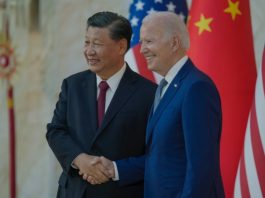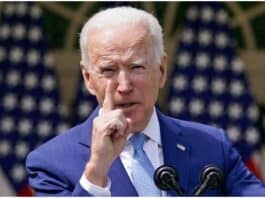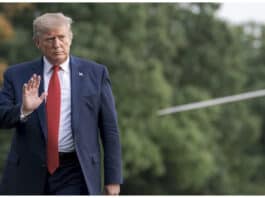Americans have relied heavily on a dependable and fast internet connection as the pandemic has forced many jobs, schools and businesses to move online.
Thanks to many of the deregulatory policies of the Federal Communications Commission (FCC) that have spurred investment, the broadband networks in the United States have been up to this challenge despite unprecedented demand. Online applications and video conferencing platforms saw massive surges in activity at the start of the pandemic.
Pew Research Center’s survey from April 2020 found 53% of U.S. adults believe the internet has been essential for them during the pandemic. For some, that isn’t enough because the digital divide remains a constant struggle for roughly 21.3 million Americans who lack access to broadband internet, including wired and fixed wireless connections. Both sides of the political aisle agree that more needs to be done to support those facing job losses due to the pandemic. And, more progress is necessary to make high speed broadband affordable to bring connectivity to some of the hardest to reach zip codes.
Fortunately, there is a way the government can help these Americans with little to no taxpayer money while simultaneously strengthening Americans communication systems: more wireless spectrum auctions.
Spectrum, the invisible infrastructure that enables wireless communications to work, is the key to unlocking the digital potential of the country. One of the primary functions of the FCC is to oversee the use of spectrum by public and private entities – ensuring everyone “stays in their lane” and doesn’t interfere with one another. In the United States, every entity that wants to broadcast using radio waves must acquire a license from the FCC. The U.S. government, the largest holder of spectrum rights in the country, also can decide to sell these rights to private companies for use in things like wireless networks.
The FCC can utilize a spectrum auction to sell the rights to transmit signals over specific bands of the electromagnetic spectrum and to assign spectrum resources to other commodities. Spectrum auctions are a win-win solution for taxpayers as money is deposited in the U.S. Treasury as the digital divide is closed, further helping Americans through the current crisis.
Spectrum auctions also help American companies with the appropriate resources needed to build robust next generation networks. These networks will support connecting more Americans and, ultimately, bridge the digital divide.
Congress and the FCC are off to a great start as the most recent auction for the 3.5 GHz band concluded in August. After 76 rounds of bidding, gross proceeds for Priority Access Licenses (PALs) in the 3.5 GHz band raised $4.6 billion; and FCC Chairman Pai stated, “This auction has been a key part of our 5G FAST Plan and our ongoing push to make more mid-band spectrum available for 5G.”
Next on the FCC’s agenda is the upcoming C-band auction, which is set for Dec. 8.
The upcoming C-band auction is another high priority item for the FCC. Scheduled to take place this fall, this auction will bring in additional revenue to subsidize programs without taxpayers footing the bill. The critical mid-band spectrum in this auction will help to close the gap and drive prosperity for workers, families and businesses in the 5G marketplace and U.S. economy.
While recent efforts by the FCC are a step in the right direction, there is still a generous amount of work to be done. There is a dire need for additional mid-band resources starting with reallocating mid-band spectrum. This will allow companies to invest billions of dollars in a high-speed, low-latency wireless network that will give underserved areas new options for connectivity. This also will add $274 billion in additional GDP and 1.3 million new jobs in emerging 5G markets.
Another huge opportunity for bridging the divide is to open up a significant portion of the 5.9 GHz band of radio spectrum for unlicensed Wi-Fi use. In November 2019, Chairman Pai announced that the lower 45 MHz of the spectrum band would be made available for internet users across the country, while the remaining 20 MHz would be devoted to innovative vehicle communications technologies. This is a big win because it will allow the agency to take away poorly utilized spectrum from the Department of Transportation for car-to-car wireless services, which never truly worked.
Through expansive spectrum auctions and re-allocating poorly utilized resources, there is an unprecedented opportunity to bridge the gap in American connectivity. From rural areas to minority communities, 5G will bring a new generation of wireless connectivity to help kids learn in online classrooms and keep co-workers on video calls. This is the time to invest in infrastructure and find a productive use for mid-band spectrum. We hope to see more support by the FCC to maximize the use of the public airwaves, especially for unlicensed use, and advance the roll-out of 5G to unlock American opportunity and prosperity.
By Johnny Kampis | The Center Square
Go to Source
Reposted with permission









